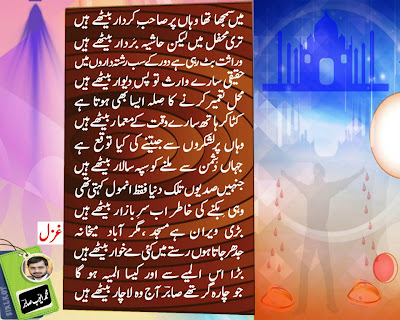Famous Poetry Biography
source(google.com)
As Monroe looked around Chicago's cultural landscape in the early years of the twentieth century, she would have seen a world-class symphony and opera, theater troupes, dance companies, along with more substantial brick and mortar evidence of citywide support for the arts, including the Art Institute and the spectacular new Orchestra Hall. She resolved to do something similar for poetry by providing a venue devoted solely to its practice, as well as the rare chance for poets to be paid for their work.
Although Monroe herself was not wealthy, she moved comfortably in the circles of Chicago's commercial and cultural elite. One of her first approaches was to novelist, socialite, and institutional trustee Hobart C. Chatfield-Taylor, who suggested a financial plan: convince 100 people to donate fifty dollars a year for five years to underwrite the operations of the magazine. With expenses covered by these donations, subscription income could be used to pay poets. Monroe had enlisted 108 people when she stopped fundraising in June 1912.
Monroe then spent several weeks in the Chicago Public Library, compiling lists of potential subscribers and contributors to whom she would send circulars announcing the new magazine: Poetry : A Magazine of Verse (the puzzlingly redundant subtitle would be dropped by Karl Shapiro in 1950). The poets' circular assured them "of a chance to be heard in their own place, without the limitations imposed by a popular magazine." As an early statement of her editorial principles, Monroe wrote, "We shall read with special interest poems of modern significance, but the most classic subject will not be declined if it reaches a high standard of quality."
Among the first to respond enthusiastically was Ezra Pound. He wrote to Monroe from London, predicting a renaissance in American poetry. Monroe accepted for her inaugural issue the two poems Pound submitted, "Middle-Aged" and "To Whistler, American" (in which he called Americans "that mass of dolts"), and also accepted Pound's offer to keep an eye out for material, naming him Poetry's first foreign correspondent.
Together, Pound and Monroe were largely responsible for introducing Modernist poetry to American readers. The revolution was rapid and complete. By 1915, when Pound forwarded "The Love Song of J. Alfred Prufrock," by a twenty-six-year-old unpublished poet named T.S. Eliot, night was no longer (and could probably never be again) Wilcox's brunette Mother sheltering her children; instead it "spread out against the sky / Like a patient etherized upon a table." And in 1918 Alice Corbin Henderson, Monroe's astute assistant editor, wrote, "Nowadays everyone is writing imagist vers libre, or what the writers conceive as such.... Free verse is now accepted in good society, where rhymed verse is considered a little shabby and old-fashioned."










source(google.com)
As Monroe looked around Chicago's cultural landscape in the early years of the twentieth century, she would have seen a world-class symphony and opera, theater troupes, dance companies, along with more substantial brick and mortar evidence of citywide support for the arts, including the Art Institute and the spectacular new Orchestra Hall. She resolved to do something similar for poetry by providing a venue devoted solely to its practice, as well as the rare chance for poets to be paid for their work.
Although Monroe herself was not wealthy, she moved comfortably in the circles of Chicago's commercial and cultural elite. One of her first approaches was to novelist, socialite, and institutional trustee Hobart C. Chatfield-Taylor, who suggested a financial plan: convince 100 people to donate fifty dollars a year for five years to underwrite the operations of the magazine. With expenses covered by these donations, subscription income could be used to pay poets. Monroe had enlisted 108 people when she stopped fundraising in June 1912.
Monroe then spent several weeks in the Chicago Public Library, compiling lists of potential subscribers and contributors to whom she would send circulars announcing the new magazine: Poetry : A Magazine of Verse (the puzzlingly redundant subtitle would be dropped by Karl Shapiro in 1950). The poets' circular assured them "of a chance to be heard in their own place, without the limitations imposed by a popular magazine." As an early statement of her editorial principles, Monroe wrote, "We shall read with special interest poems of modern significance, but the most classic subject will not be declined if it reaches a high standard of quality."
Among the first to respond enthusiastically was Ezra Pound. He wrote to Monroe from London, predicting a renaissance in American poetry. Monroe accepted for her inaugural issue the two poems Pound submitted, "Middle-Aged" and "To Whistler, American" (in which he called Americans "that mass of dolts"), and also accepted Pound's offer to keep an eye out for material, naming him Poetry's first foreign correspondent.
Together, Pound and Monroe were largely responsible for introducing Modernist poetry to American readers. The revolution was rapid and complete. By 1915, when Pound forwarded "The Love Song of J. Alfred Prufrock," by a twenty-six-year-old unpublished poet named T.S. Eliot, night was no longer (and could probably never be again) Wilcox's brunette Mother sheltering her children; instead it "spread out against the sky / Like a patient etherized upon a table." And in 1918 Alice Corbin Henderson, Monroe's astute assistant editor, wrote, "Nowadays everyone is writing imagist vers libre, or what the writers conceive as such.... Free verse is now accepted in good society, where rhymed verse is considered a little shabby and old-fashioned."
Famous Poetry 2013 Pics Pictures Images Photos

Famous Poetry 2013 Pics Pictures Images Photos

Famous Poetry 2013 Pics Pictures Images Photos

Famous Poetry 2013 Pics Pictures Images Photos

Famous Poetry 2013 Pics Pictures Images Photos

Famous Poetry 2013 Pics Pictures Images Photos

Famous Poetry 2013 Pics Pictures Images Photos

Famous Poetry 2013 Pics Pictures Images Photos

Famous Poetry 2013 Pics Pictures Images Photos

Famous Poetry 2013 Pics Pictures Images Photos





No comments:
Post a Comment